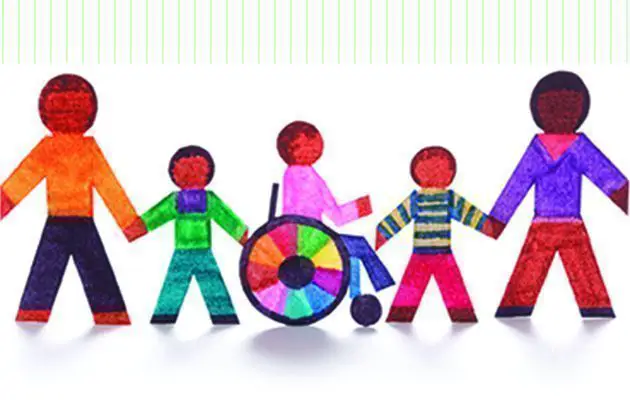Mainstreaming can be especially difficult for children with autism spectrum disorder because they face socialization, communication, and engagement challenges. Here are 10 tips for mainstreaming a child with ASD, including choosing a school and advocating for your child.
Mainstreaming, or placing a child with special needs in a regular school classroom, is particularly hard for children who are on the autism spectrum because they face challenges related to socialization, engagement, communication, and more. Due to these challenges, children on the spectrum often have anxiety about the school day. We spoke to Pelham resident Barbara Boroson, who is a social worker and school consultant, mother of two—one of her children is on the spectrum—and author of Autism Spectrum Disorders in the Mainstream Classroom: How to Reach and Teach Students With ASDs (Scholastic Inc.; $24.99; scholastic.com/professional) to get advice for parents who are about to mainstream their child with autism.
DO’s for Mainstreaming a Child with ASD
DO: Be a respectful advocate for your child. As a parent of a child on the autism spectrum, you probably have some great resources. If you want to share some of them with your child’s teacher, approach him or her “with an attitude of: I know my child is challenging, and you are going to have your work cut out for you. But I found this great book, and it helped me and other teachers. If you think it would help you, I am happy to give you my copy,” Boroson says. “As long as a parent presents it as, We are in this together, it tends to be very well received. In other words, you want to start the relationship off saying, I am going to be respectful of you and your time, but we need to make certain accommodations for my child.”
DO: Support your child’s efforts at socialization. “Across the board, [socialization] will be the greatest challenge,” Boroson says. If you have the means, Boroson suggests getting your child into a social support group. Alternatively, see if your child’s teacher is willing to organize a small group of kids who eat lunch and play together during recess a few days a week.
DO: Role-play different social situations. Boroson suggests that parents act out different situations with their child so that he or she can learn the appropriate way to act. For example, the playground can be especially hard for children on the spectrum because “you are essentially throwing hundreds of kids out there with no structure [and] with more sensory stimulation,” Boroson says. Swings are often the easiest for a child on the spectrum to deal with because they are predictable and solitary, but it may be hard for the child to recognize that other children are waiting for a turn. Parents can act out this situation—and others—with their children so that the children can practice these behaviors.
DO: Visit the school and meet the teacher beforehand. Call the teacher to set up a time for you and your child to meet him or her and see the classroom before school starts. “It is enormously important to give children on the spectrum a chance to see and be in the environment that they will be in for the school year, before the school year begins,” Boroson says. Once your child is familiar with the setting, it is less threatening and anxiety producing.
DO: Get your child on a schedule. “For most children, it is helpful to get them on a school type of schedule, in terms of waking in the morning and going to bed, well before school begins,” Boroson says. “A week to two weeks before, start pushing that bedtime earlier and waking them earlier to shift them back into a school-year schedule.”
DON’Ts for Mainstreaming a Child with ASD
DON’T: Expect teachers to rearrange their class and schedule. At home, your family may be enabling certain behaviors of your child on the spectrum. Teachers will have to be accommodating, but they can’t be expected to change everything about their classroom to meet the needs of one child. Teachers want to be fair to all the children in the class, so Boroson suggests that you ask the teacher to “tell [your] child ahead of time that she can’t go first, for example. Tell her that she is going 12th so she can expect that. That might help her wait.”
DON’T: Automatically be on the defensive. One of the hardest things for parents to hear during parent-teacher meetings is if the child is struggling. “I think that parents can tend to get defensive when the teacher talks about how much the child is struggling at school,” Boroson says. “Having been on both sides of that conversation, being both the special needs parent and the professional, I know how hard that can be.” Boroson says parents need to remember that the teacher is only reporting what he or she observes in the classroom, not negating the parents’ own experience at home.
DON’T: Be surprised if the teacher describes your child differently than you do. “Home is less stimulating [than school] in a lot of ways. Schools have fluorescent lighting, for example, which can be over-stimulating to kids on the spectrum. Home is quieter, cozier, more familiar, and has fewer transitions,” Boroson says. “So there are a many reasons a child may be functioning differently at school than at home.” School is closer to “real world functioning” for your child, so understand that the teacher is seeing your child in a different situation than you normally do.
DON’T: Discredit a school that doesn’t have a specialized program. If you have the option to choose what school your child attends and can’t find one that has experience with students on the autism spectrum, Boroson suggests choosing “a school that is open to adapting itself to different kinds of learners, or even a teacher who is…willing to bend and stretch and learn and accommodate and adapt. I think a really good teacher is trying to do that with every child, but kids on the spectrum require extra—they require a little more bending and a little more stretching.” Boroson also suggests that smaller class sizes are easier on children on the spectrum.
DON’T: Assume a teacher that “goes with the flow” is better. Children on the spectrum need a schedule and structure, so the ideal teacher may be one who is understanding and accommodating, but also follows a predictable schedule. “A teacher who is always free and easy and willing to go with the flow—as appealing as that may be—could really be difficult for a student on the spectrum who isn’t going to follow the bouncing ball from one subject to the next spontaneous subject,” Boroson says. “But when a teacher can lay out the day [and say], ‘Here is our schedule, and we’re sticking to it’…that can be very comforting to a student on the spectrum.”
Westchester resident Barbara Boroson, LMSW, has been involved with autism spectrum education for 20 years in clinical, administrative, and advisory capacities. As a consultant, she supports teachers and school districts with integrating students on the spectrum into mainstream settings. She is also a guest lecturer, and her writing has appeared in publications across the country. For more information, visit barbaraboroson.com.
Also see:
Why Are Children on the Autism Spectrum More Vulnerable to Bullying
Helping Challenged Kids Go Back to School




















